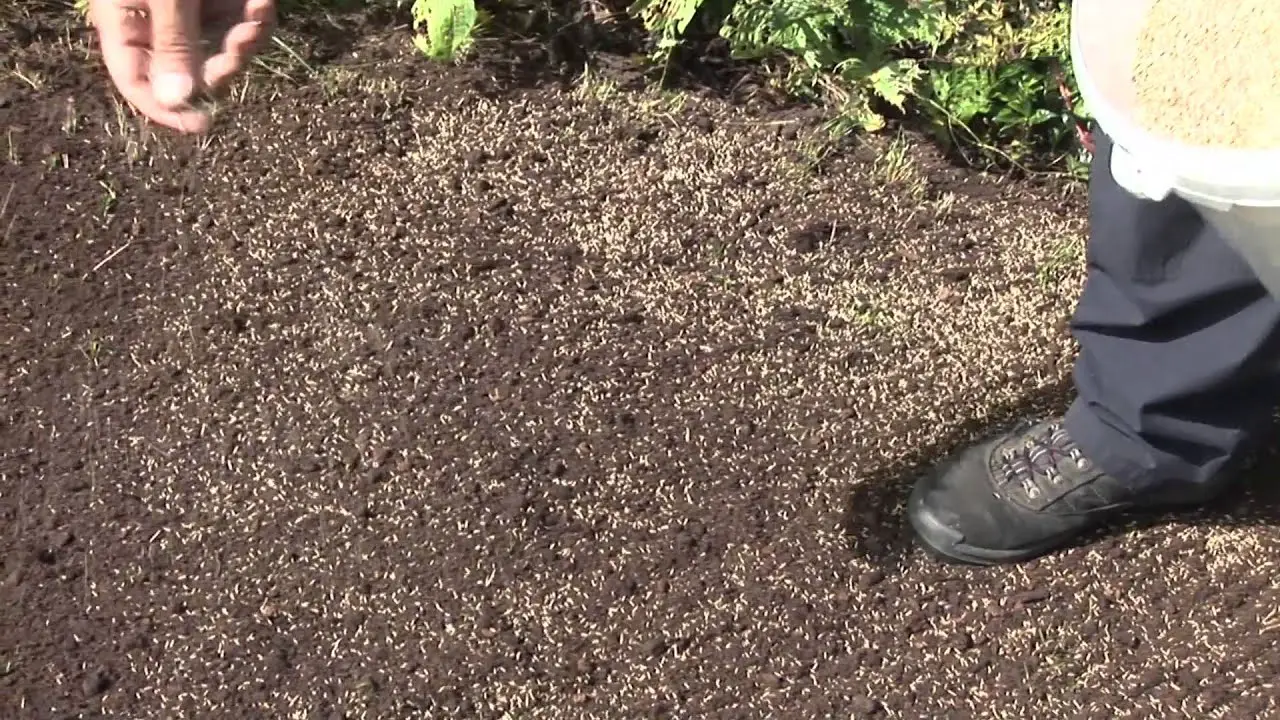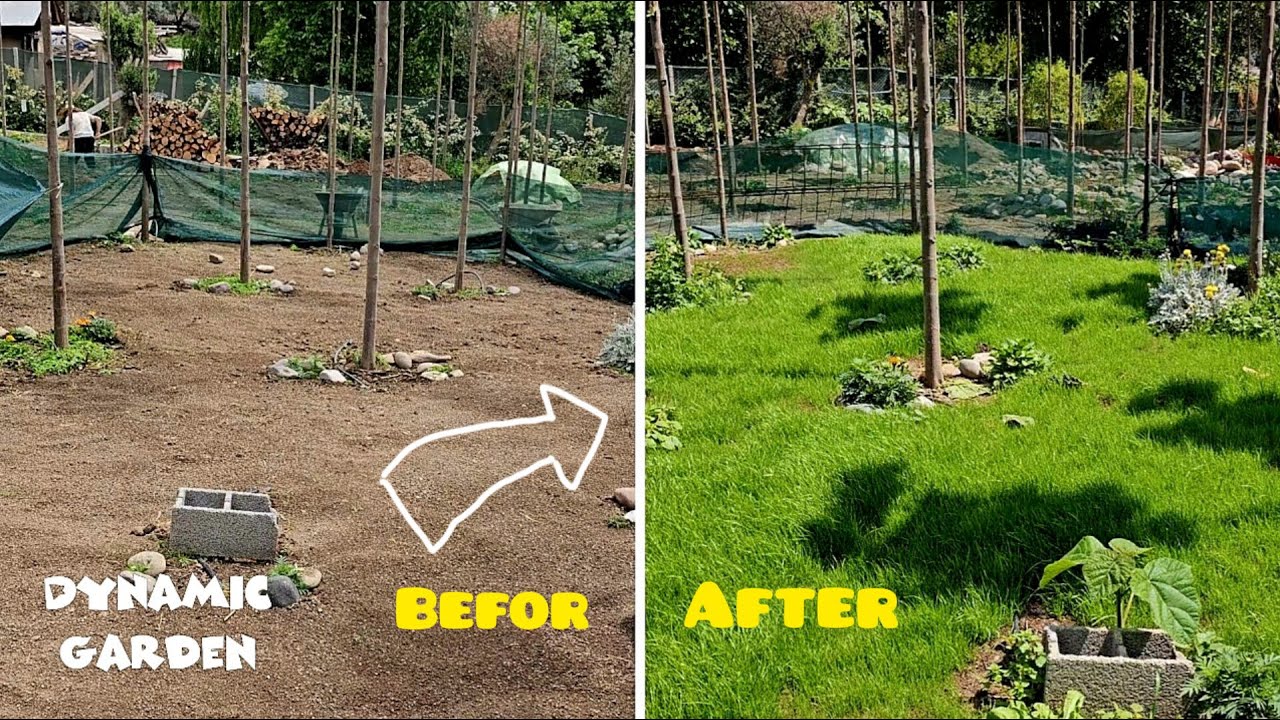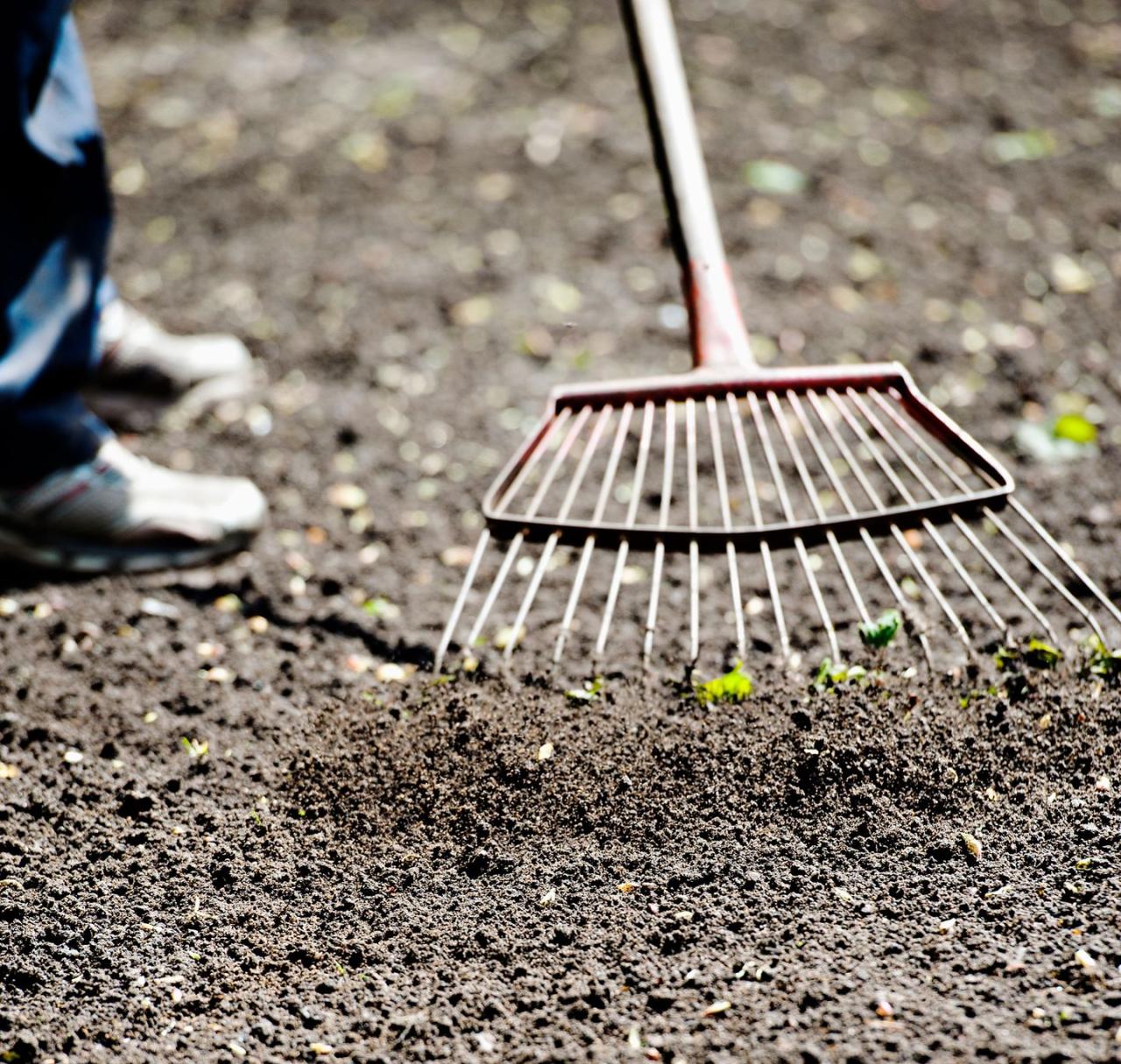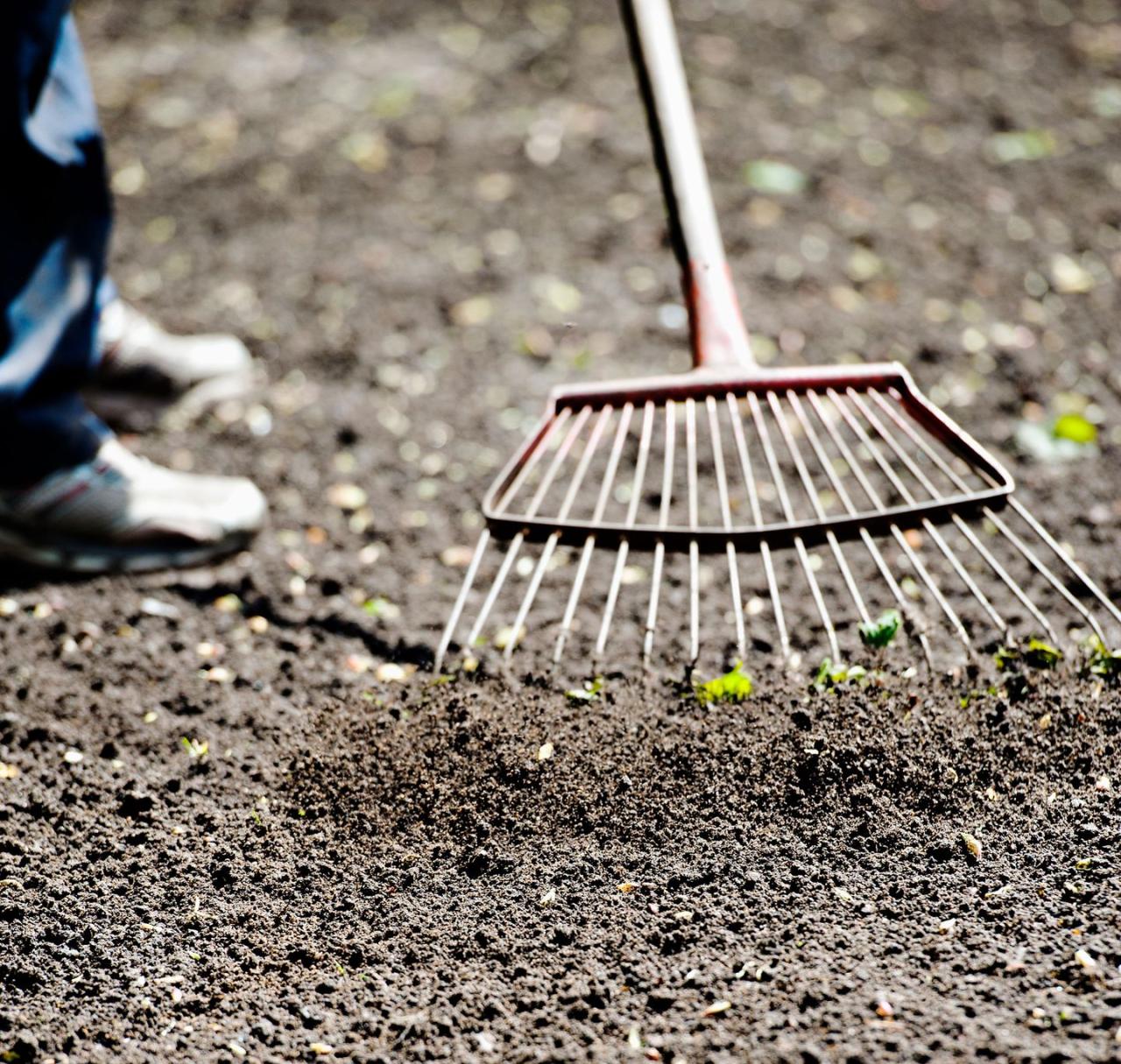How to Prepare Your Lawn for Grass Seed in September sets the stage for a successful fall lawn renovation. September offers a prime window for seeding, providing cooler temperatures and consistent rainfall that support optimal germination. This guide delves into the essential steps, from assessing your lawn’s condition to protecting your new grass, ensuring a lush and healthy lawn come springtime.
First, you’ll need to evaluate your lawn’s current state. This involves understanding your soil’s pH and nutrient levels, identifying existing grass types, and addressing any existing issues like weeds, compacted soil, or disease. Once you have a clear picture, you can move on to preparing the soil.
This may involve removing existing vegetation and thatch, tilling or aerating the soil, and incorporating compost or other amendments to improve soil structure and fertility.
Assessing Your Lawn’s Condition
Before you can sow grass seed, it’s crucial to assess your lawn’s current condition. This will help you identify any problems that need to be addressed before seeding, ensuring the new grass has the best chance of thriving.
Soil Testing
Soil testing is a vital step in preparing your lawn for grass seed. It helps determine the pH and nutrient levels of your soil.
- pH:The pH scale measures the acidity or alkalinity of your soil. Most grasses prefer a slightly acidic soil with a pH between 6.0 and 7.0. If your soil is too acidic or alkaline, it can hinder grass growth and nutrient uptake.
- Nutrient Levels:Soil testing can identify any nutrient deficiencies, such as nitrogen, phosphorus, or potassium, that could be limiting grass growth. Knowing the nutrient levels allows you to apply the appropriate fertilizers to create a healthy growing environment for your new grass.
You can purchase soil testing kits from garden centers or online, or have your soil tested by a professional laboratory.
Identifying Existing Grass Types
Understanding the types of grasses currently in your lawn is crucial for choosing the right seed.
Preparing your lawn for grass seed in September involves a few crucial steps. First, ensure your soil is adequately aerated to allow the seed to make proper contact with the ground. Next, consider applying a starter fertilizer to provide the necessary nutrients for germination.
Once you’ve laid down the seed, it’s essential to follow the proper watering techniques, as outlined in How to Ensure Grass Seed Germinates in September , to help your new grass thrive. By following these steps, you’ll set the stage for a lush, healthy lawn come spring.
- Warm-Season Grasses:These grasses thrive in hot, humid climates and include Bermuda grass, zoysia grass, and centipede grass. They typically go dormant in the winter and become active again in the spring.
- Cool-Season Grasses:These grasses prefer cooler temperatures and include Kentucky bluegrass, perennial ryegrass, and fine fescue. They are active in the fall and spring and may go dormant in the summer.
If you are unsure of your existing grass types, you can consult a local nursery or lawn care professional for identification.
Addressing Lawn Problems
Before seeding, it’s essential to address any existing lawn problems that could hinder the success of your new grass.
- Weeds:Weeds compete with grass for nutrients, water, and sunlight. Use a pre-emergent herbicide to prevent weed seeds from germinating before seeding, and a post-emergent herbicide to control existing weeds.
- Compacted Soil:Compacted soil prevents water and air from reaching the roots, hindering grass growth. Aerating the soil can improve drainage and create better conditions for new grass.
- Disease:Disease can weaken existing grass and make it susceptible to damage. Treat any diseases before seeding using appropriate fungicides.
Preparing the Soil: How To Prepare Your Lawn For Grass Seed In September

A well-prepared soil is crucial for healthy grass seed germination and establishment. This involves removing existing vegetation and thatch, improving soil structure and fertility, and creating an ideal environment for new grass roots to thrive.
Removing Existing Vegetation and Thatch
Removing existing vegetation and thatch is essential for creating a clean canvas for your new grass seed. Thatch is a layer of dead grass and other organic matter that can impede water and air penetration, hindering root development and promoting disease.
- Manual Removal:For small areas, you can use a rake or hand tools to remove existing vegetation and thatch. This method is labor-intensive but effective for removing stubborn weeds and thatch.
- Chemical Control:Herbicides can be used to kill existing vegetation, but it’s important to choose a product specifically designed for pre-emergent control, which prevents weed seeds from germinating. Consult with a local gardening expert or your local extension office for recommendations.
- Dethatching:A dethatching rake or power dethatcher can remove thatch from the lawn. Dethatching rakes have sharp blades that pull out thatch, while power dethatchers use rotating blades to remove thatch more efficiently.
Tilling or Aerating the Soil
Tilling and aerating the soil are essential steps for improving soil structure and drainage, which are critical for healthy grass growth.
- Tilling:Tilling breaks up compacted soil, allowing air and water to penetrate more easily. It also helps incorporate amendments like compost into the soil. You can use a rototiller for larger areas or a hand tiller for smaller patches.
- Aerating:Aeration involves creating small holes in the soil to improve drainage and root growth. You can use a manual aerator, which involves pushing a tool into the soil, or a power aerator, which uses hollow tines to remove small plugs of soil.
Incorporating Amendments
Compost and other amendments can improve soil structure and fertility, providing essential nutrients for healthy grass growth.
- Compost:Compost is a rich source of organic matter that improves soil structure, drainage, and fertility. It provides essential nutrients for grass growth and enhances water retention.
- Other Amendments:Other amendments that can be incorporated into the soil include peat moss, which improves drainage and aeration, and lime, which adjusts soil pH.
Choosing the Right Grass Seed
Selecting the right grass seed is crucial for a thriving lawn. Consider factors like your climate, soil type, and desired aesthetic to ensure you choose a variety that will thrive in your specific conditions. This will lead to a lush, healthy lawn that requires less maintenance.
Choosing the Right Grass Seed Variety
The most common grass seed types are cool-season and warm-season grasses. Cool-season grasses thrive in cooler temperatures and are best suited for regions with mild winters. They typically grow best in the fall and spring. Warm-season grasses, on the other hand, prefer warmer temperatures and grow best during the summer months.
Cool-Season Grasses
- Kentucky Bluegrass:This is a popular choice for lawns in the northern United States. It has a dense, dark green color and is known for its excellent wear tolerance. However, it can be slow to germinate and may require more frequent watering.
- Fine Fescue:This grass is known for its shade tolerance and low maintenance requirements. It’s an excellent choice for lawns with trees or other structures that cast shade. Fine fescue also requires less water than other cool-season grasses.
- Perennial Ryegrass:This fast-growing grass is ideal for establishing a lawn quickly. It’s also known for its excellent wear tolerance, making it a good choice for high-traffic areas. However, perennial ryegrass can be less drought-tolerant than other cool-season grasses.
Warm-Season Grasses
- Bermuda Grass:This grass is known for its aggressive growth habit and heat tolerance. It’s a popular choice for lawns in the southern United States and other warm climates. However, Bermuda grass can be difficult to control and may require more frequent mowing.
- Zoysia Grass:This grass is known for its deep green color and drought tolerance. It’s a good choice for lawns in areas with hot, humid summers. Zoysia grass is also known for its slow growth rate, which can be beneficial for homeowners who prefer less mowing.
- St. Augustine Grass:This grass is known for its lush, green color and its ability to tolerate shade. It’s a popular choice for lawns in the southeastern United States. St. Augustine grass can be more susceptible to diseases than other warm-season grasses.
Choosing a Seed Mix
Using a seed mix, which blends several grass varieties, can offer several advantages:
- Improved Disease Resistance:Combining different grass types can help create a more diverse lawn, which can be more resistant to diseases.
- Enhanced Wear Tolerance:A seed mix can provide a balance of different growth habits and wear tolerances, resulting in a more resilient lawn.
- Better Adaptation to Different Conditions:A seed mix can be tailored to your specific needs, such as a mix for shade tolerance or drought resistance.
Regional Grass Seed Recommendations
Region |
Recommended Grass Seed |
|---|---|
Northern United States |
Kentucky Bluegrass, Fine Fescue, Perennial Ryegrass |
Southern United States |
Bermuda Grass, Zoysia Grass, St. Augustine Grass |
West Coast |
Fine Fescue, Perennial Ryegrass, Kentucky Bluegrass |
Mid-Atlantic |
Kentucky Bluegrass, Fine Fescue, Perennial Ryegrass |
Advantages and Disadvantages of Seed Mixes
- Advantages:Seed mixes offer greater diversity, which can lead to increased disease resistance, better wear tolerance, and improved adaptation to different conditions.
- Disadvantages:Seed mixes can be more expensive than single varieties. They may also be more challenging to manage, as different grass types have different growth habits and maintenance needs.
Sowing the Seed

With the soil prepped and the seed chosen, it’s time to spread the magic. Sowing the seed correctly is crucial for a healthy and thriving lawn. This section will guide you through the proper technique, ensuring even distribution and optimal germination.
Broadcasting the Seed, How to Prepare Your Lawn for Grass Seed in September
The most common method for spreading grass seed is broadcasting. This involves scattering the seed evenly across the lawn, aiming for a consistent distribution. Here’s how to achieve this:
- Using a Spreader:A spreader is a tool designed to distribute seed evenly across a lawn. It’s particularly helpful for larger areas.
- Types of Spreaders:There are two main types of spreaders: rotary spreaders and drop spreaders. Rotary spreaders spin the seed, while drop spreaders release seed through a series of openings.
The choice depends on the size of the lawn and the desired level of precision.
- Calibration:Before using a spreader, calibrate it to ensure the correct seed application rate. This involves adjusting the spreader’s settings to match the recommended seed rate for your chosen grass type.
Preparing your lawn for grass seed in September involves removing existing weeds and aerating the soil to ensure optimal seed germination. While you’re focusing on your lawn, consider adding a touch of floral beauty with columbine plants. The Essential Guide to Beautiful Columbine Plants offers valuable insights on cultivating these stunning blooms, which thrive in partial shade and complement a well-maintained lawn.
Once your grass seed is sown, you’ll have a lush green canvas for your vibrant columbine displays.
- Walking Pattern:Walk in a consistent pattern across the lawn, overlapping each pass by about half the spreader’s width. This helps ensure even coverage.
- Types of Spreaders:There are two main types of spreaders: rotary spreaders and drop spreaders. Rotary spreaders spin the seed, while drop spreaders release seed through a series of openings.
- Manual Broadcasting:For smaller areas, manual broadcasting can be done by hand.
- Even Distribution:Scatter the seed evenly, aiming for a consistent coverage. This might involve walking back and forth across the lawn, spreading the seed in a zig-zag pattern.
- Seed Rate:Use the recommended seed rate for your chosen grass type.
You can find this information on the seed packaging or online.
Seed Depth
The depth at which the seed is sown is critical for successful germination. Too shallow, and the seed might dry out. Too deep, and the seed may not have enough energy to reach the surface.
The ideal seeding depth is typically between 1/4 to 1/2 inch.
- Rake or Tiller:A light raking or tilling of the soil can help incorporate the seed into the desired depth.
- Foot Traffic:Lightly walking across the seeded area can also help press the seed into the soil.
Covering the Seed
After sowing, it’s important to cover the seed with a thin layer of soil or compost. This helps protect the seed from drying out, birds, and other pests.
- Soil:Use a light layer of topsoil or a mixture of compost and soil to cover the seed.
- Compost:Compost is a good option as it provides nutrients for the developing grass.
- Straw:A thin layer of straw can also be used as a mulch.
This helps retain moisture and suppress weeds.
Watering and Maintenance
After sowing your grass seed, consistent and proper watering is crucial for germination and establishment. A well-watered lawn promotes healthy root development, leading to a thriving, resilient turf. However, overwatering can be detrimental, leading to fungal diseases and root rot.
This section will guide you on establishing an effective watering schedule and essential maintenance practices for your newly seeded lawn.
Watering Schedule
A consistent watering schedule is key to successful grass seed germination and growth. The frequency and duration of watering depend on factors like weather, soil type, and the type of grass seed used. Generally, aim for light, frequent watering, ensuring the top inch of soil remains moist.
- Weather:During hot, dry periods, water more frequently, perhaps even twice a day. During cooler, wetter periods, watering may be less frequent.
- Soil Type:Sandy soils drain quickly and require more frequent watering. Clay soils retain moisture longer and may need less frequent watering.
- Grass Seed Type:Different grass varieties have different water requirements. Check the seed packet for specific recommendations.
Importance of Light, Frequent Watering
Light, frequent watering is beneficial for several reasons:
- Encourages Deeper Root Growth:Frequent, shallow watering encourages roots to grow deeper in search of moisture, leading to a more drought-tolerant lawn.
- Reduces Water Runoff:Shallow watering allows water to penetrate the soil gradually, minimizing runoff and maximizing water absorption.
- Promotes Germination:Consistent moisture is essential for grass seed germination, ensuring a successful lawn.
Risks of Overwatering
Overwatering can be as detrimental as underwatering. Here are some risks associated with excessive watering:
- Fungal Diseases:Excessive moisture creates an ideal environment for fungal diseases, which can damage and kill grass.
- Root Rot:Overwatering can suffocate roots, leading to root rot and weakening the grass.
- Nutrient Leaching:Excessive watering can wash away essential nutrients from the soil, hindering grass growth.
Essential Maintenance Tasks
During the first few weeks after seeding, consistent watering is paramount. However, there are other essential maintenance tasks to ensure your lawn thrives.
- Mowing:Once the grass reaches a height of 2-3 inches, mow it to a height of 1-2 inches. Avoid mowing too low during the initial stages, as it can damage young grass.
- Fertilizing:After the grass has established itself, apply a starter fertilizer to promote healthy growth. Follow the instructions on the fertilizer packaging for application rates and timing.
- Weed Control:Monitor for weeds and control them promptly to prevent competition for nutrients and water. Use a pre-emergent herbicide before the weeds germinate, or a post-emergent herbicide after they have emerged.
- Pest Control:Be vigilant for pests like grubs, chinch bugs, and other insects. If you notice signs of pest activity, take appropriate measures to control them.
Protecting New Grass

Your new lawn is a fragile ecosystem, vulnerable to pests, diseases, and harsh weather conditions. Protecting it from these threats is crucial for its long-term health and success. By understanding the potential dangers and implementing appropriate preventative measures, you can ensure your new lawn thrives.
Preventing Soil Compaction
Soil compaction can impede root growth, leading to a weak and unhealthy lawn. To prevent this, avoid walking on the new lawn, especially when the soil is wet. Consider using a walkway or stepping stones to minimize foot traffic.
Furthermore, aeration can help to improve soil drainage and reduce compaction.
Identifying and Addressing Common Problems
- Pests:Common lawn pests include grubs, chinch bugs, and armyworms. These insects can damage or destroy seedlings, leading to thin or patchy lawns. Regularly inspect your lawn for signs of pest infestation, such as wilting, discoloration, or bare patches.
You can use beneficial nematodes, insecticidal soap, or other organic pest control methods to address these problems.
- Diseases:Fungal diseases like brown patch and dollar spot can damage new lawns. Good air circulation and proper watering techniques can help prevent fungal diseases. If you notice signs of disease, such as circular patches of brown or yellow grass, consult with a lawn care professional for treatment recommendations.
- Weather Conditions:Extreme heat, drought, and heavy rain can stress new seedlings. Provide adequate water during dry spells and avoid overwatering. During hot weather, consider using shade cloth to protect your lawn from intense sunlight.
Last Word
With a little planning and effort, you can successfully prepare your lawn for grass seed in September and enjoy a vibrant, healthy lawn next spring. By following these steps, you’ll create the perfect environment for new grass to thrive, giving you a lush and green lawn that will be the envy of your neighborhood.
FAQs
What type of grass seed should I use in September?
The best grass seed for September depends on your region’s climate and soil type. Cool-season grasses like Kentucky bluegrass, fescue, and ryegrass are ideal for fall seeding in most areas.
How deep should I sow the grass seed?
The recommended seeding depth for most grass types is about 1/4 inch. Use a spreader to ensure even distribution and cover the seed with a thin layer of soil or compost.
How long does it take for grass seed to germinate?
Germination time for grass seed can vary depending on the type of seed, weather conditions, and soil temperature. However, you can typically expect to see new grass emerge within 7 to 14 days.
What are some common problems that can occur with new lawns?
Common problems include weeds, disease, pests, and soil compaction. Regular watering, fertilization, and proper lawn maintenance can help prevent these issues.
